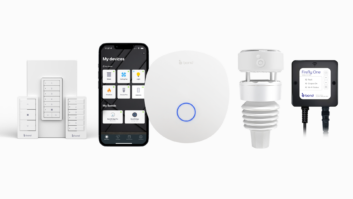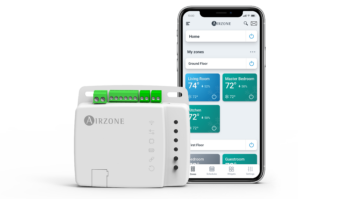Fort Worth, Texas – RadioShack is compensating for razor-thin smartphone margins by selling more accessories, renegotiating its contract with Target, and beefing up its mobile staff and marketing.
In a classic CE industry conundrum, the company’s mounting losses, which escalated from $8 million in the first quarter to $21 million in the second quarter to $47 million in the third, are due in large measure to its success at selling smartphones in general and iPhones in particular.
In an earnings call that followed the release of its third-quarter results this morning, RadioShack interim CEO Dorvin Lively acknowledged that despite the greater sophistication and average selling price of smartphones, their gross margin rates are much lower than those of feature phones, leading to gross margin rate compression as the devices become a bigger part of the sales mix.
The problem was further exacerbated by the “dramatic uptick” in iPhone sales as carriers added them to their prepaid rosters, he said.
In contrast, RadioShack has achieved stable or improving gross margins in most of its other segments — including its stagnant CE business, which Lively described as “a huge” development.
To offset the bottom-line impact of prepaid smartphones, RadioShack is continuing to build its assortment of high-margin wireless accessories and headphones. The chain offered 28 cases for iPhone 5 on the day of its launch, Lively noted, and half of the purchases were made by customers who bought their iPhones elsewhere.
“We’re becoming a destination for wireless accessories,” he said.
RadioShack also sees growth opportunities in prepaid wireless plans, where smartphones are much less heavily subsidized and the chain can build on a private-label service launched last month with Cricket.
The retailer is also in talks with Target to reset the terms of its money-losing outsourcing arrangement with the discounter. RadioShack operates mobile departments in 1,500 Target stores, but lost about $14 million on the deal last quarter because it is excluded from sharing in accessory and prepaid sales, the two most profitable pieces of the mobile business. Lively said RadioShack is prepared to walk away from the partnership when its contract expires in April, and has issued Target a termination notice.
Meanwhile, the chain is working internally to further fuel its mobile business and direct more profitable sales by deploying dedicated, specially-trained wireless associates to high-volume stores this holiday season. In addition, it launched an eligibility alert program in September, when it first achieved the capability, in which customers are contacted and store appointments are made to upgrade their mobile plans.
The company will also roll out new TV spots produced by its recently hired ad agency, Grey Advertising.
To reduce overhead, the company cut 10 percent of its headquarters workforce in September, or 150 staffers. Excluding an $8.5 million severance charge that included a payout to former CEO Jim Gooch, plus other one-time charges, RadioShack trimmed its selling, general and administrative expenses (SG&A) by $11 million year over year, Lively said.
Turning to the current quarter, Lively said tight supplies of iPhone 5 will crimp sales while an ever higher smartphone mix will further compress margins. RadioShack will continue to close underperforming stores, having shut 70 year to date, and continues its search for a permanent CEO and a new chief merchandising officer following Scott Young’s departure in June, he said.













